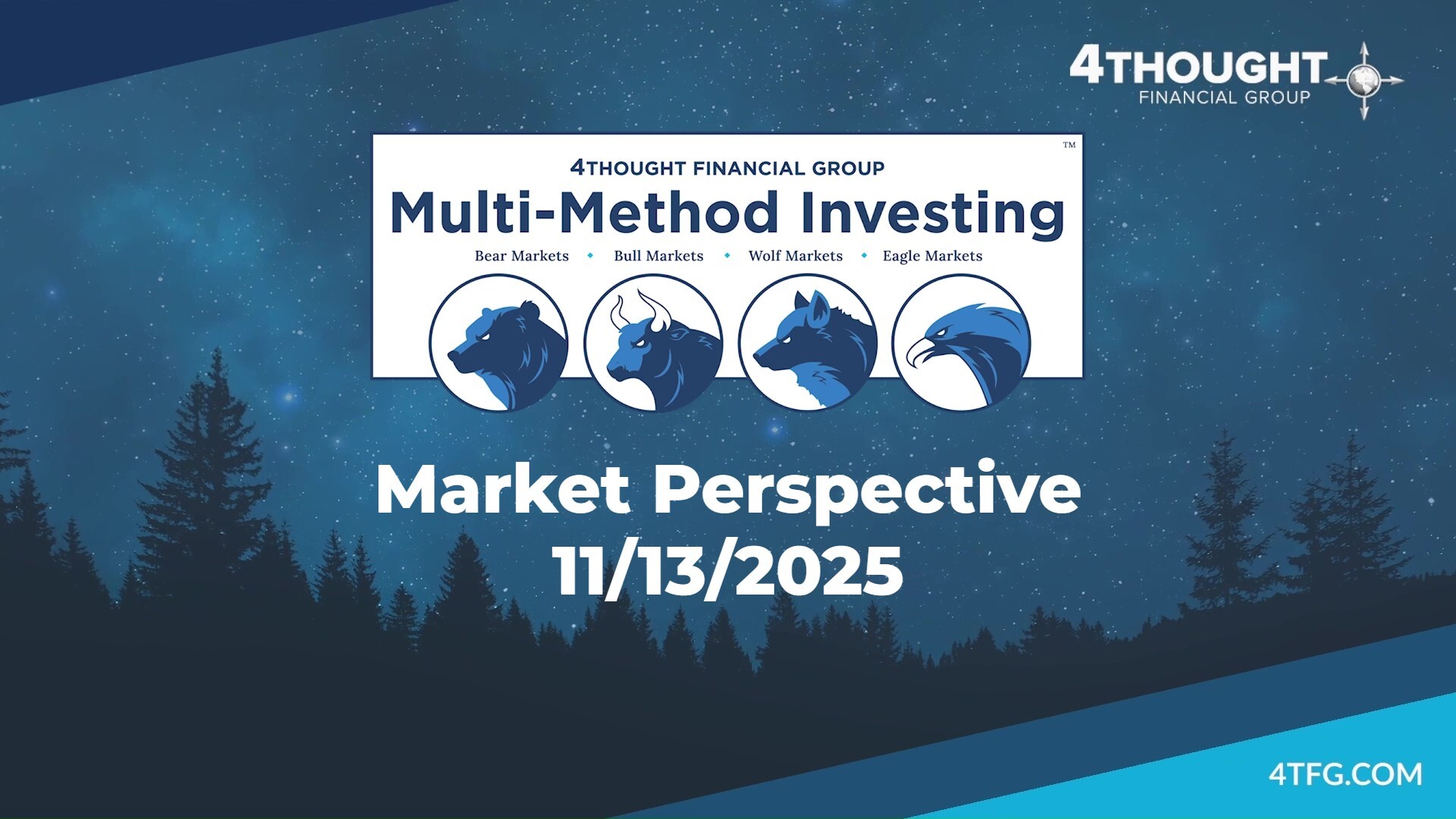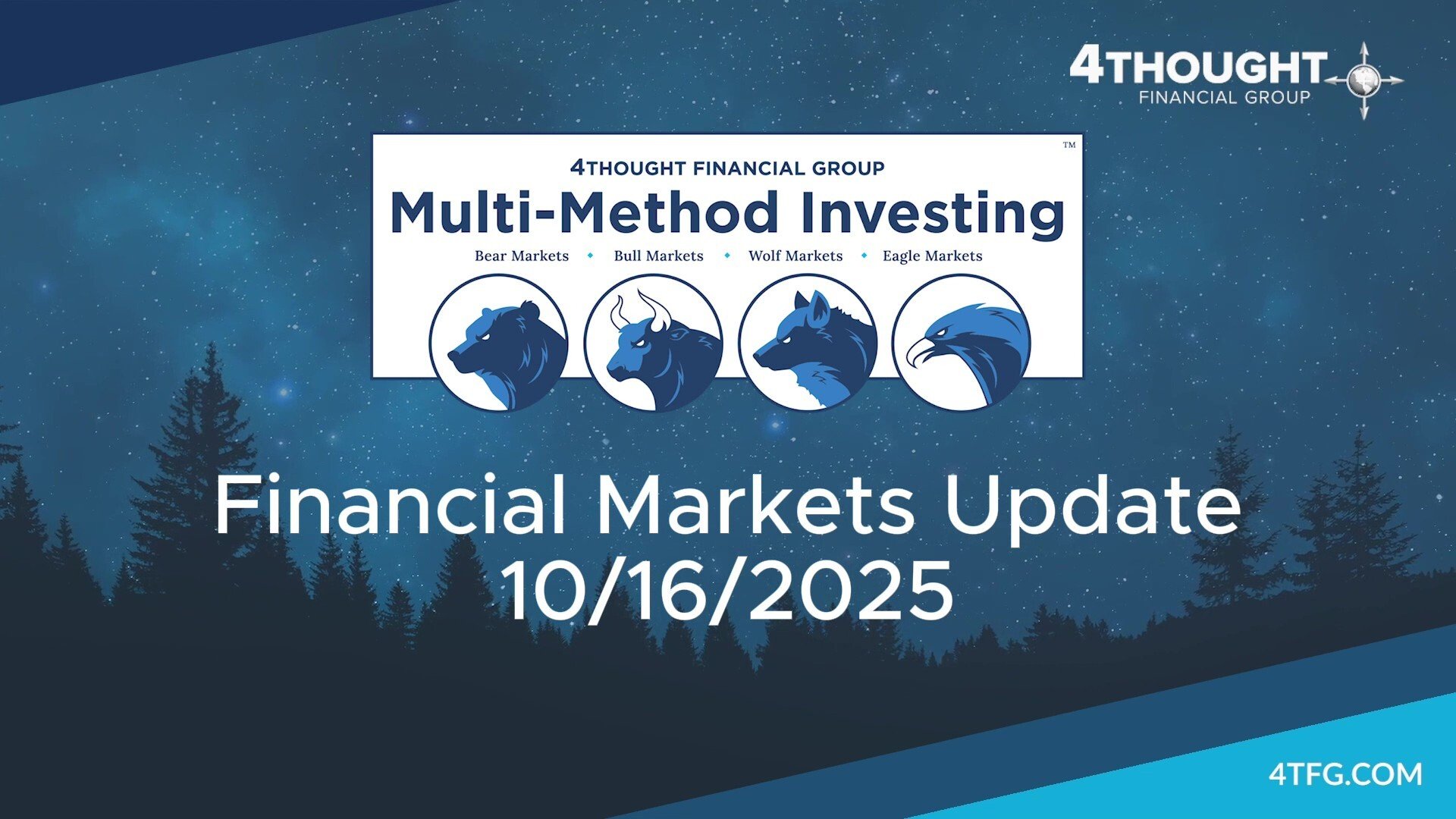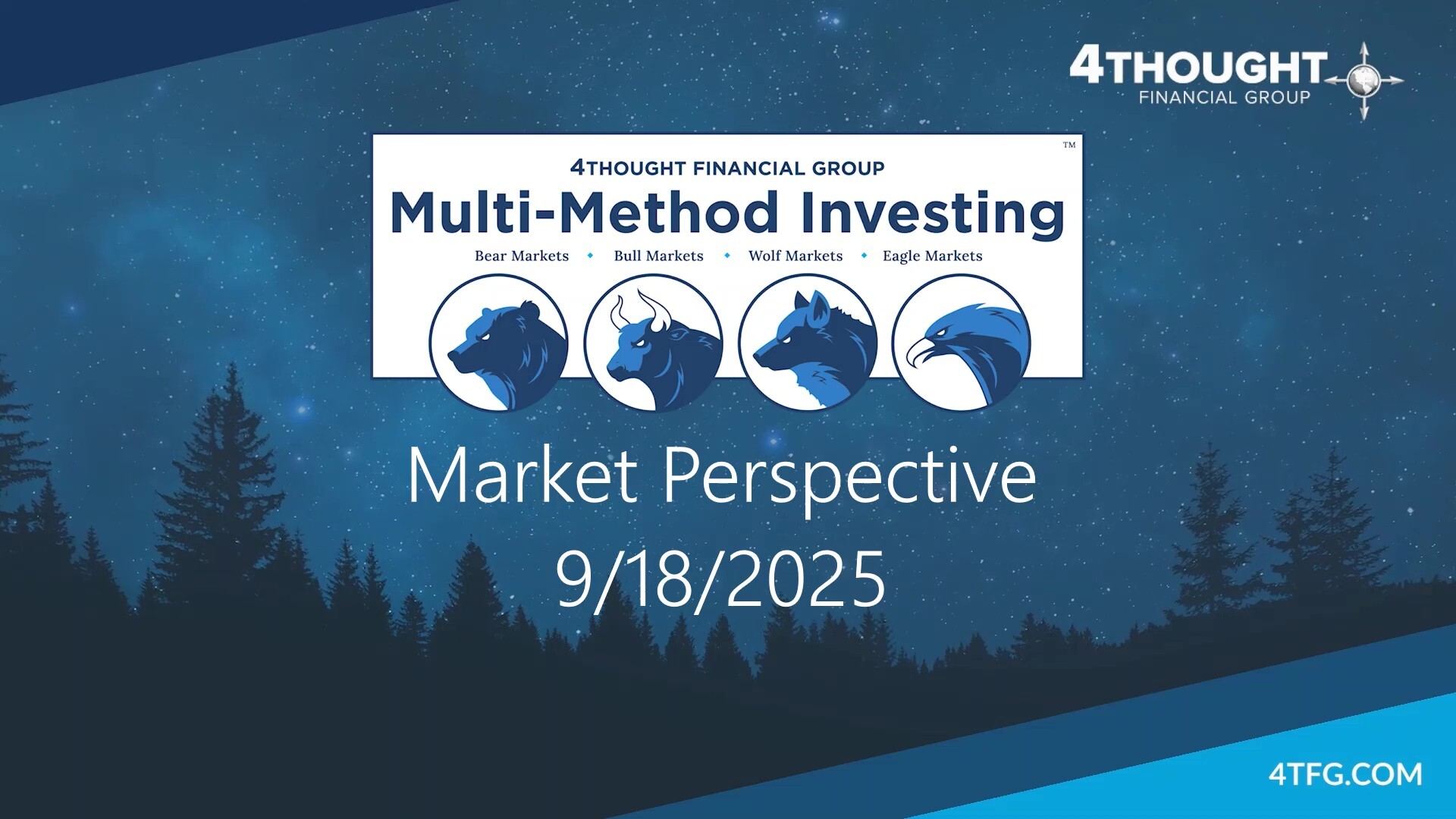4Thought provides you with actionable investment analysis and perspective on the financial markets.
Contact us to determine whether any ideas presented are applicable to your situation before taking any actions with regards to your financial plan or investment portfolio.
Hear from Chief Investment Officer Jesse Mackey in this week's Market Perspective.
VIDEO TRANSCRIPT:
I’m Jesse Mackey, CIO of 4Thought Financial Group, and this is 4Thought’s Market Perspective as of January 4th, 2022.
Briefly summarizing the financial markets in 2021, the S&P 500 Index ended the year just below the new record intraday price achieved on December 30th, having just recovered from a minor correction of 5.24% that began on November 22nd. There were no corrections of 10% or greater for the entire calendar year. Across all asset types, US large cap stocks outperformed smaller companies, non-US stocks, and bonds of all types to end up the best performers in 2021. Emerging markets stocks showed the worst performance. Most stock types (with the exception of emerging markets) outperformed bonds by a wide margin. In fact, Treasury Inflation Protected Securities were the only major bond type that posted positive returns.
After the first day of trading in 2022 (which was positive for stocks and negative for bonds), the S&P 500 Index has now experienced net additional gains of 31.56% since the point of recovery from its last 10%+ correction, which was on November 9th, 2020.
Historical data indicates that once a new Bull Market has been confirmed (which happened on August 18th of 2020 when the S&P 500 Index had recovered from its March 23rd, 2020 Bear Market low point and achieved a new record price), the longest time period on record (since 1950) before the beginning of another Bear Market was 7.44 years, with an average of 2.44 years. Only 1.38 years have elapsed from the point of Bull confirmation in this instance so far.
There has usually been at least one 10%+ correction (but often several) between most bear markets in history. The average time between the end of one correction (or bear market) and the start of another is a little over 1 year. The first correction in the current Bull Market was completed 1.28 years ago on September 24th, 2020. We refer to the combination of a correction and its corresponding recovery (which was registered on November 9th, 2020) as a Wolf Market.
Our data set also tells us that about 55% percent of Wolf Markets like the last one we experienced have been followed by a period that exhibits trailing 1-year returns of 30% or greater without a 10%+ correction (something we refer to as an Eagle Market). The first Eagle Market subset of the current Bull Market was quantitatively confirmed on March 1st, 2021 and has been repeatedly reconfirmed since then, including yet again yesterday on January 3rd, 2022. Once an Eagle Market has been indicated, it continues for an average of an additional 5.35 months. This instance has continued for 10.3 months so far, which places it well above the average duration. Eagles may be followed by any of the other three market types, including a flattening of growth rates to return to a standard Bull Market, or an immediate reversion into a Wolf or Bear market. Given that stocks may still be relatively early in the (traditionally defined) Bull portion of the market cycle (by historical standards), an immediate Bear market (although certainly possible) appears the least likely of the various scenarios, while a 10%+ correction is becoming increasingly likely in the short to intermediate term.
Based on analysis of the complete historical market type data set using our Multi-Method Adaptive algorithmic process, we are now allowing overweight allocations to Opportunistic Investing, neutral allocations to Strategic Asset Allocation and Liability-Driven Investing, and underweights to Selective/Concentrated Investing.
From a probabilistic analysis perspective, valuations tell a story that's relatively negative for most stock types, and more favorable for portions of the bond markets. On this basis, stock types range from near fair value (in the case of emerging markets stocks) to moderately overvalued (in the case of US large cap stocks). Bonds range from moderately undervalued (in the case of investment grade corporate bonds) to near fair value (in the case of Treasury Inflation Protected Securities). Investment grade corporate bonds now reflect the most attractive pricing relative to the alternatives, while US large cap stocks are the least attractive.
Against this backdrop the outlook for stocks is now slightly negative in the short to intermediate term based on the overall aggregate of our historical market-type data analysis and quantitative probabilistic analysis.
I hope this was helpful. If you have questions or you’d like to discuss what this means for your particular situation, please contact 4Thought at 516-300-1617 or at info@4tfg.com – and don’t forget to subscribe to our blog feed and our YouTube channel. Thanks for watching, and see you next week.






Leave a Comment